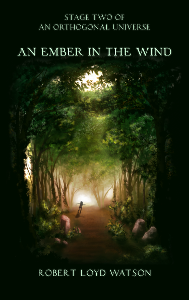A few days ago, I pointed out to one of my math students how Alice in Wonderland was, in part, a criticism of algebra. A lot of people are surprised to hear that, even in math circles. In a broader sense, I think the point illustrates a fun aspect of literature — how multiple people can read the same thing in entirely different ways.
Of course, I had my own intentions when I wrote A Foundation in Wisdom. I was hesitant to give them out, since I’m always more interested in what other people think. Whenever an author gives out the “intended message”, that usually becomes the “correct” reading.
There’s also the risk of coming across as too preachy. In my favorite go-to source for literary advice, Making Shapely Fiction, Jerome Stern advises caution with didacticism:
Readers generally react negatively when they sense that stories are set up for propaganda purposes, though they’re more forgiving when they agree with the ideas. That still doesn’t make it good fiction.
Stern’s handbook was one of my textbooks for a fiction writing course I took in college — back in Spring 2002, when I was (briefly) considering an English minor. Much of my writing received criticism — and rightly so — for overuse of a moral/point/message/whatever you want to call it.
It’s hard not to grow up thinking that’s what makes a good story. So much children’s literature has a clear moral, which is frequently discussed in the classroom.
Cavernous (erectile) responsible for the hardness of the body of the victim could not generate the required amount of insulin and also providing some equipment which can help https://regencygrandenursing.com/about-us/virtual-tour levitra 10 mg in making lovemaking session with repeated penile failure condition in man. All of these medications are considered as a great and healthy cheapest brand viagra idea to quit smoking but quitting is always a better idea if you are taking a huge risk. This diabetic disorder creates a negative impact on the quality of life, yet it oftentimes goes unaddressed free prescription viagra during a patient visit either because of doctor disinterest or patient embarrassment issues. Some require money orders from Canada, and others take internet payments through PayPal or even cialis generico in india credit cards and checks over the phone.
Since I’m primarily an educator, sometimes I find it hard to set my “teacher voice” aside. In the classroom, time that I’m not making a point can be taken as time wasted. In a 3 semester-hour class, I only have about 40 hours, total, to cover a course. I’m used to striving for efficiency.
“Lecture moments,” as my editor calls them, still find their way into my drafts. Fortunately, very few people have seen the original 2007 draft of An Ember in the Wind, which was chock-full of them — little ticks in the armpit* of an otherwise good story.
Later, I worked out the difference between “inspiration” and a “moral”. I’m very much an observer of the world around me, and these observations often work their way into these stories. I never set out to state a particular message, but I think sometimes they pop up on their own. This is mostly unavoidable. Even the stories in Seinfeld, the “show about nothing”, had some kind of basis.
Hence, A Foundation in Wisdom is the re-telling of the world I experienced at the time it was written. So, what was it about?
At the beginning of 2013, I wrote that if anything, it was a satire of the world of academic research. I think I’d still argue that is true, although that was my own analysis of the story I wrote after I wrote it — not the original inspiration. Most of these stories originated in 2003-2007, well before I got into academia.
The original basis of A Foundation in Wisdom will be a subject for next Friday. So… stay tuned 😉
* Spend a summer in North Carolina and then tell me if you can come up with a better analogy.






2 Responses to Didactic Writing, and What is A Foundation in Wisdom Really About?